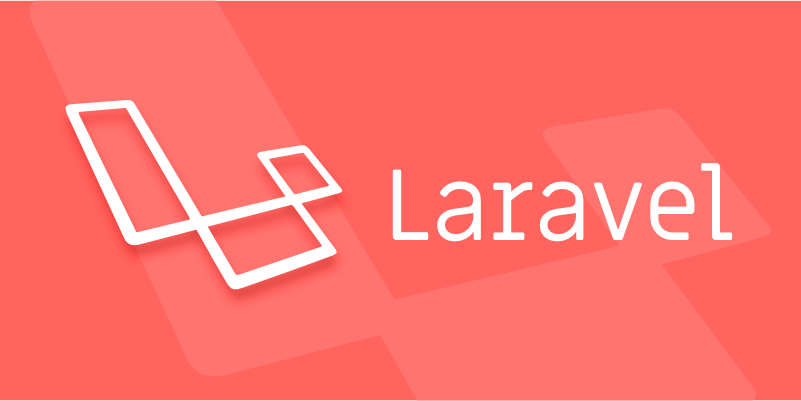To implement 2FA in Laravel, use packages like pragmarx/google2fa-laravel or spatie/laravel-google2fa. 1. Install and publish the package configuration. 2. Add a 'google2fa_secret' column to the users table via migration. 3. Generate a secret key and display a QR code for the user to scan with an authenticator app. 4. Verify the one-time password during login, optionally adjusting the window size for clock drift. 5. Provide recovery options like backup codes to handle lost access securely.

Setting up two-factor authentication (2FA) in Laravel is more straightforward than you might think, especially with packages like Google2FA or Spatie Laravel Google Authenticator. The main idea is to add a second layer of security beyond passwords—usually a time-based one-time password (TOTP)—so even if someone gets your password, they still can’t log in without that second code.

Here’s how to implement it effectively:

1. Choose the Right Package
Laravel doesn’t include 2FA out of the box, but there are solid community packages that make integration easy. Two popular options are:
- pragmarx/google2fa-laravel: A wrapper around the Google2FA library, good for basic TOTP support.
- spatie/laravel-google2fa: Another solid option with more built-in features like recovery codes and UI helpers.
You’ll usually go with one of these unless you need something custom or enterprise-grade like WebAuthn (which is a different story).

To install the first package:
composer require pragmarx/google2fa-laravel
Then publish the config:
php artisan vendor:publish --provider="PragmaRX\Google2FA\Google2FAServiceProvider"
2. Add 2FA Fields to Your User Model
You’ll need to store a secret key for each user. This key is used to generate and verify TOTP codes.
Run a migration:
php artisan make:migration add_google2fa_secret_to_users
In the migration file:
Schema::table('users', function (Blueprint $table) {
$table->string('google2fa_secret')->nullable();
});Then run:
php artisan migrate
Now your users can have their own 2FA secrets stored securely.
3. Generate and Display the QR Code
Once the user enables 2FA, you need to generate a secret and show them a QR code to scan with an app like Google Authenticator or Authy.
In your controller:
use PragmaRX\Google2FA\Google2FA;
$google2fa = new Google2FA();
$secret = $google2fa->generateSecretKey();
// Store the secret temporarily or save it to the user model
$user->update(['google2fa_secret' => $secret]);
$qrCodeUrl = $google2fa->getQRCodeUrl(
config('app.name'),
$user->email,
$secret
);Pass $qrCodeUrl to your view and display the QR code as an image. The user scans this with their authenticator app.
4. Verify the One-Time Password
After the user sets up their app, they’ll enter a generated code during login. You need to verify that code against their secret.
In your login flow:
use PragmaRX\Google2FA\Google2FA;
$google2fa = new Google2FA();
if (! $google2fa->verifyKey($user->google2fa_secret, $request->input('one_time_password'))) {
return back()->withErrors(['one_time_password' => 'Invalid 2FA code']);
}This should happen after the regular password check. If the code is invalid, deny access.
You might want to allow some flexibility by setting window size (number of previous/future codes allowed), which can help with clock drift issues:
$google2fa->setWindow(1); // allows one previous or future code
5. Handle Recovery Options
If a user loses access to their authenticator app, they’ll need a way back in. Common approaches include:
- Backup codes (generated and saved when 2FA is enabled)
- Email-based recovery (less secure but common)
- Admin override (for internal apps)
Backup codes are the most typical solution. When enabling 2FA, generate a few codes and let the user download or print them. Store them securely (e.g., encrypted in the DB or hashed if possible).
Implementing 2FA in Laravel isn’t too hard once you’ve got the right tools and flow in place. It adds a small amount of complexity to your login process, but it significantly boosts account security. Just remember to test the whole flow yourself from setup to verification—and don’t forget recovery paths.
The above is the detailed content of Implementing Two-Factor Authentication in Laravel?. For more information, please follow other related articles on the PHP Chinese website!

Hot AI Tools

Undress AI Tool
Undress images for free

Undresser.AI Undress
AI-powered app for creating realistic nude photos

AI Clothes Remover
Online AI tool for removing clothes from photos.

Clothoff.io
AI clothes remover

Video Face Swap
Swap faces in any video effortlessly with our completely free AI face swap tool!

Hot Article

Hot Tools

Notepad++7.3.1
Easy-to-use and free code editor

SublimeText3 Chinese version
Chinese version, very easy to use

Zend Studio 13.0.1
Powerful PHP integrated development environment

Dreamweaver CS6
Visual web development tools

SublimeText3 Mac version
God-level code editing software (SublimeText3)

Hot Topics
 What are routes in Laravel, and how are they defined?
Jun 12, 2025 pm 08:21 PM
What are routes in Laravel, and how are they defined?
Jun 12, 2025 pm 08:21 PM
In Laravel, routing is the entry point of the application that defines the response logic when a client requests a specific URI. The route maps the URL to the corresponding processing code, which usually contains HTTP methods, URIs, and actions (closures or controller methods). 1. Basic structure of route definition: bind requests using Route::verb('/uri',action); 2. Supports multiple HTTP verbs such as GET, POST, PUT, etc.; 3. Dynamic parameters can be defined through {param} and data can be passed; 4. Routes can be named to generate URLs or redirects; 5. Use grouping functions to uniformly add prefixes, middleware and other sharing settings; 6. Routing files are divided into web.php, ap according to their purpose
 What are policies in Laravel, and how are they used?
Jun 21, 2025 am 12:21 AM
What are policies in Laravel, and how are they used?
Jun 21, 2025 am 12:21 AM
InLaravel,policiesorganizeauthorizationlogicformodelactions.1.Policiesareclasseswithmethodslikeview,create,update,anddeletethatreturntrueorfalsebasedonuserpermissions.2.Toregisterapolicy,mapthemodeltoitspolicyinthe$policiesarrayofAuthServiceProvider.
 How do I create new records in the database using Eloquent?
Jun 14, 2025 am 12:34 AM
How do I create new records in the database using Eloquent?
Jun 14, 2025 am 12:34 AM
To create new records in the database using Eloquent, there are four main methods: 1. Use the create method to quickly create records by passing in the attribute array, such as User::create(['name'=>'JohnDoe','email'=>'john@example.com']); 2. Use the save method to manually instantiate the model and assign values ??to save one by one, which is suitable for scenarios where conditional assignment or extra logic is required; 3. Use firstOrCreate to find or create records based on search conditions to avoid duplicate data; 4. Use updateOrCreate to find records and update, if not, create them, which is suitable for processing imported data, etc., which may be repetitive.
 How do I run seeders in Laravel? (php artisan db:seed)
Jun 12, 2025 pm 06:01 PM
How do I run seeders in Laravel? (php artisan db:seed)
Jun 12, 2025 pm 06:01 PM
Thephpartisandb:seedcommandinLaravelisusedtopopulatethedatabasewithtestordefaultdata.1.Itexecutestherun()methodinseederclasseslocatedin/database/seeders.2.Developerscanrunallseeders,aspecificseederusing--class,ortruncatetablesbeforeseedingwith--trunc
 What is the purpose of the artisan command-line tool in Laravel?
Jun 13, 2025 am 11:17 AM
What is the purpose of the artisan command-line tool in Laravel?
Jun 13, 2025 am 11:17 AM
Artisan is a command line tool of Laravel to improve development efficiency. Its core functions include: 1. Generate code structures, such as controllers, models, etc., and automatically create files through make: controller and other commands; 2. Manage database migration and fill, use migrate to run migration, and db:seed to fill data; 3. Support custom commands, such as make:command creation command class to implement business logic encapsulation; 4. Provide debugging and environment management functions, such as key:generate to generate keys, and serve to start the development server. Proficiency in using Artisan can significantly improve Laravel development efficiency.
 How do I install Laravel on my operating system (Windows, macOS, Linux)?
Jun 19, 2025 am 12:31 AM
How do I install Laravel on my operating system (Windows, macOS, Linux)?
Jun 19, 2025 am 12:31 AM
Yes,youcaninstallLaravelonanyoperatingsystembyfollowingthesesteps:1.InstallPHPandrequiredextensionslikembstring,openssl,andxmlusingtoolslikeXAMPPonWindows,HomebrewonmacOS,oraptonLinux;2.InstallComposer,usinganinstalleronWindowsorterminalcommandsonmac
 How do I define methods (actions) in a controller?
Jun 14, 2025 am 12:38 AM
How do I define methods (actions) in a controller?
Jun 14, 2025 am 12:38 AM
Defining a method (also known as an action) in a controller is to tell the application what to do when someone visits a specific URL. These methods usually process requests, process data, and return responses such as HTML pages or JSON. Understanding the basic structure: Most web frameworks (such as RubyonRails, Laravel, or SpringMVC) use controllers to group related operations. Methods within each controller usually correspond to a route, i.e. the URL path that someone can access. For example, there may be the following methods in PostsController: 1.index() – display post list; 2.show() – display individual posts; 3.create() – handle creating new posts; 4.u
 How do I run tests in Laravel? (php artisan test)
Jun 13, 2025 am 12:02 AM
How do I run tests in Laravel? (php artisan test)
Jun 13, 2025 am 12:02 AM
ToruntestsinLaraveleffectively,usethephpartisantestcommandwhichsimplifiesPHPUnitusage.1.Setupa.env.testingfileandconfigurephpunit.xmltouseatestdatabaselikeSQLite.2.Generatetestfilesusingphpartisanmake:test,using--unitforunittests.3.Writetestswithmeth






